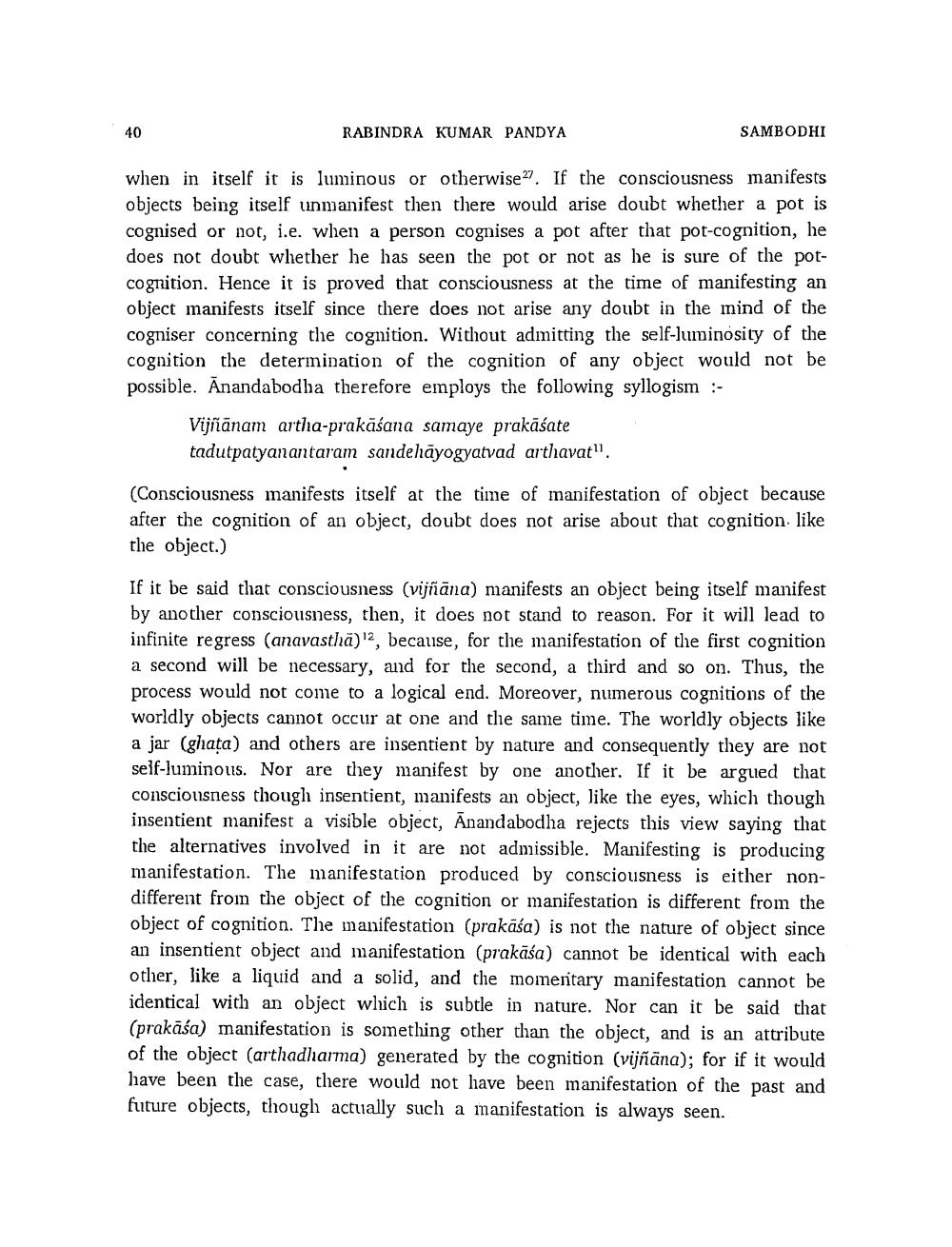________________
40
RABINDRA KUMAR PANDYA
SAMBODHI
when in itself it is luminous or otherwise 27. If the consciousness manifests objects being itself unmanifest then there would arise doubt whether a pot is cognised or not, i.e. when a person cognises a pot after that pot-cognition, he does not doubt whether he has seen the pot or not as he is sure of the potcognition. Hence it is proved that consciousness at the time of manifesting an object manifests itself since there does not arise any doubt in the mind of the cogniser concerning the cognition. Without admitting the self-luminosity of the cognition the determination of the cognition of any object would not be possible. Anandabodha therefore employs the following syllogism :
Vijñānam artha-prakāśana samaye prakāśate tadutpatyan antaram sandehāyogyatvad arthavat".
(Consciousness manifests itself at the time of manifestation of object because after the cognition of an object, doubt does not arise about that cognition like the object.)
If it be said that consciousness (vijñāna) manifests an object being itself manifest by another consciousness, then, it does not stand to reason. For it will lead to infinite regress (anavastha)", because, for the manifestation of the first cognition a second will be necessary, and for the second, a third and so on. Thus, the process would not come to a logical end. Moreover, numerous cognitions of the worldly objects cannot occur at one and the same time. The worldly objects like a jar (ghata) and others are insentient by nature and consequently they are not self-luminous. Nor are they manifest by one another. If it be argued that consciousness though insentient, manifests an object, like the eyes, which though insentient manifest a visible object, Anandabodha rejects this view saying that the alternatives involved in it are not admissible. Manifesting is producing manifestation. The manifestation produced by consciousness is either nondifferent from the object of the cognition or manifestation is different from the object of cognition. The manifestation (prakāśa) is not the nature of object since an insentient object and manifestation (prakāśa) cannot be identical with each other, like a liquid and a solid, and the momentary manifestation cannot be identical with an object which is subtle in nature. Nor can it be said that (prakäśa) manifestation is something other than the object, and is an attribute of the object (arthadharma) generated by the cognition (vijñāna); for if it would have been the case, there would not have been manifestation of the past and future objects, though actually such a manifestation is always seen.




